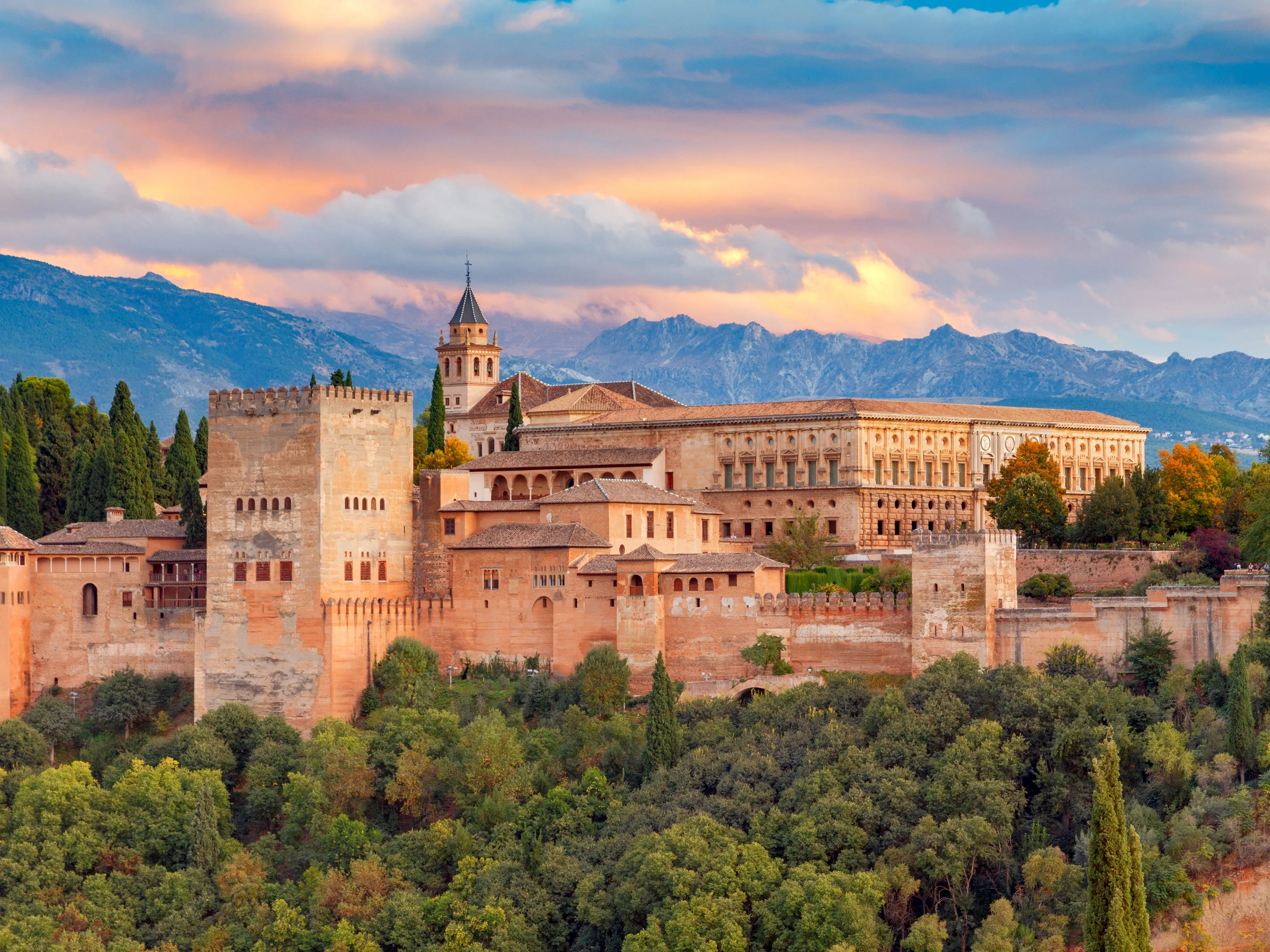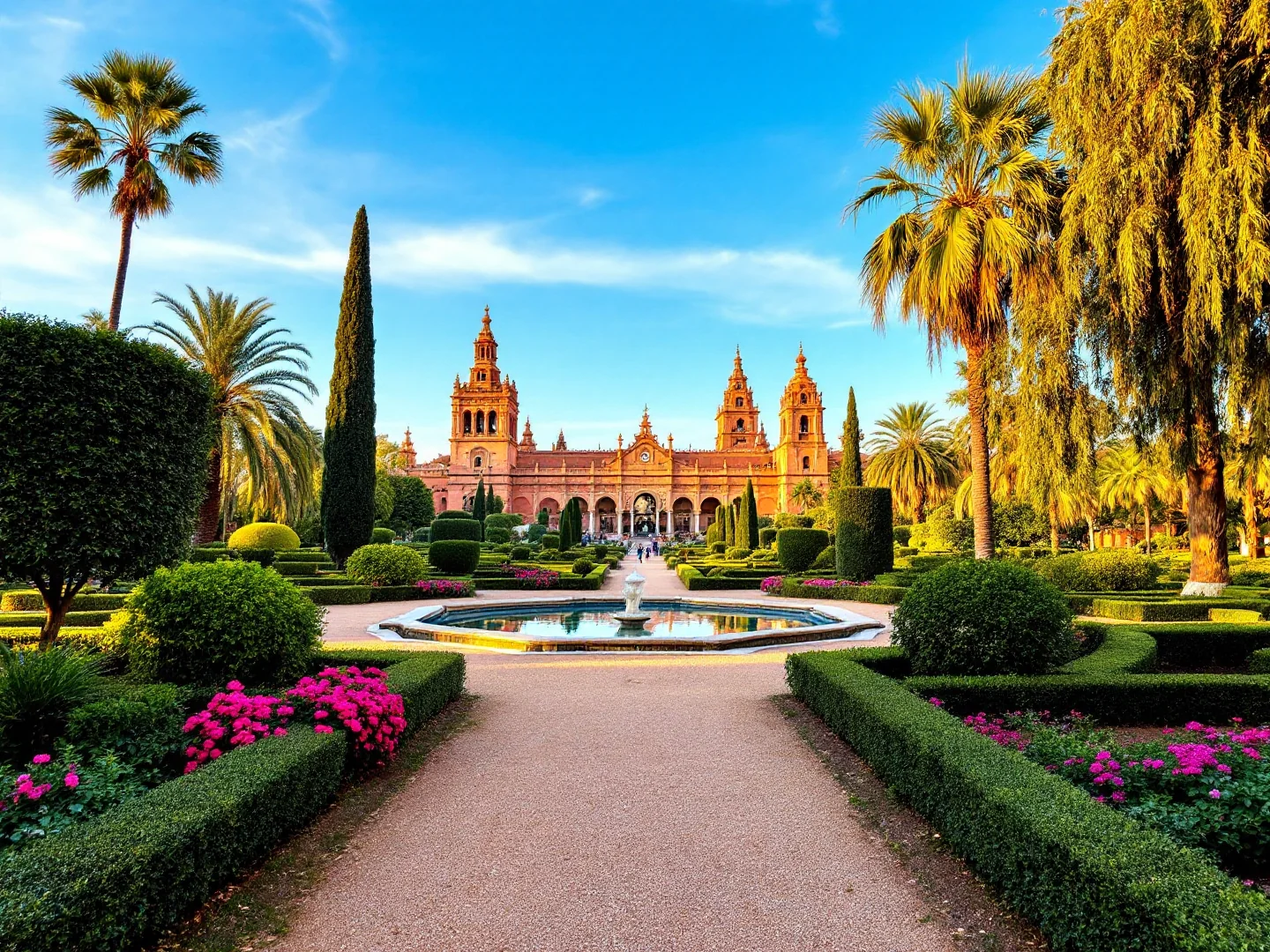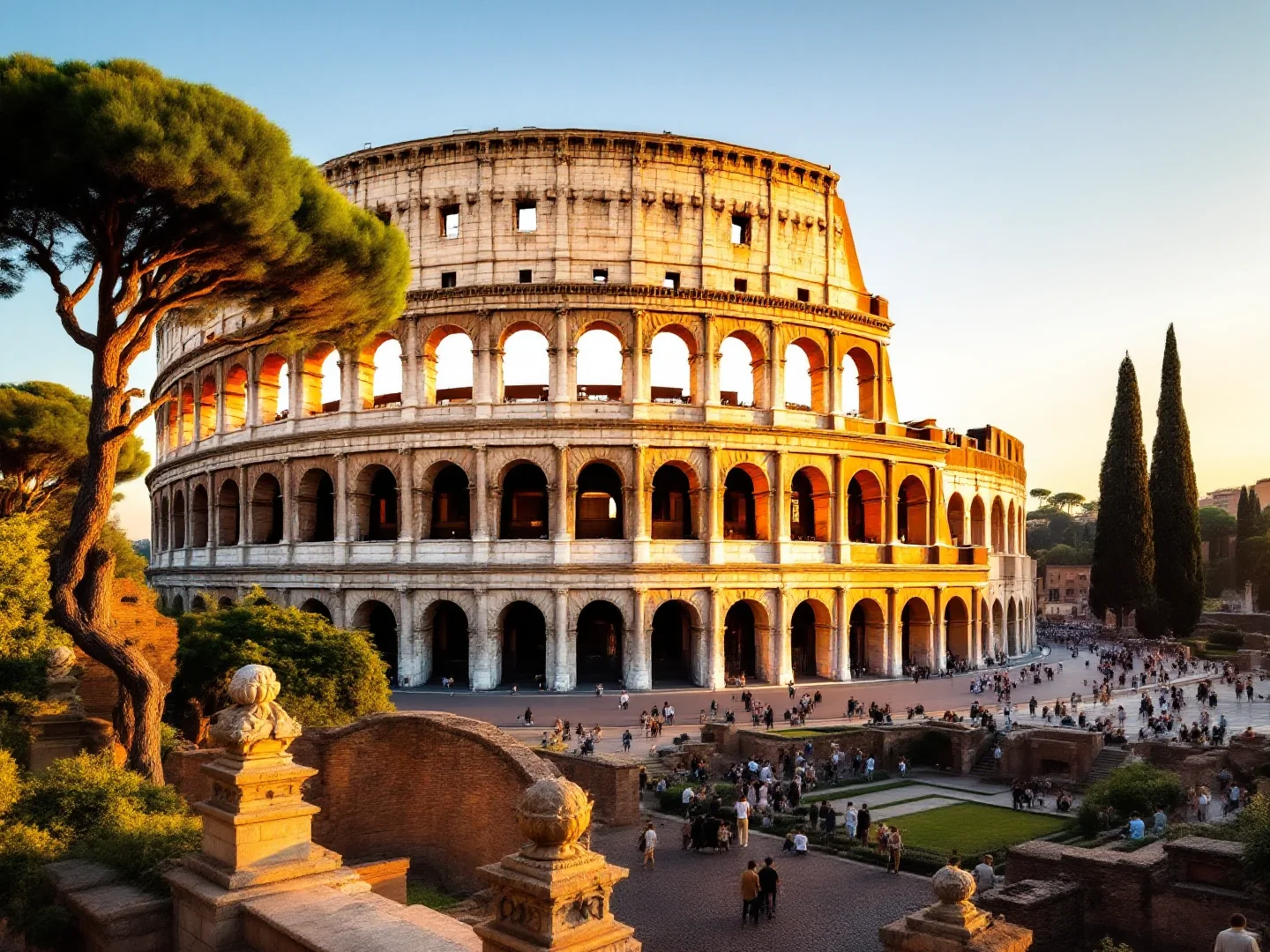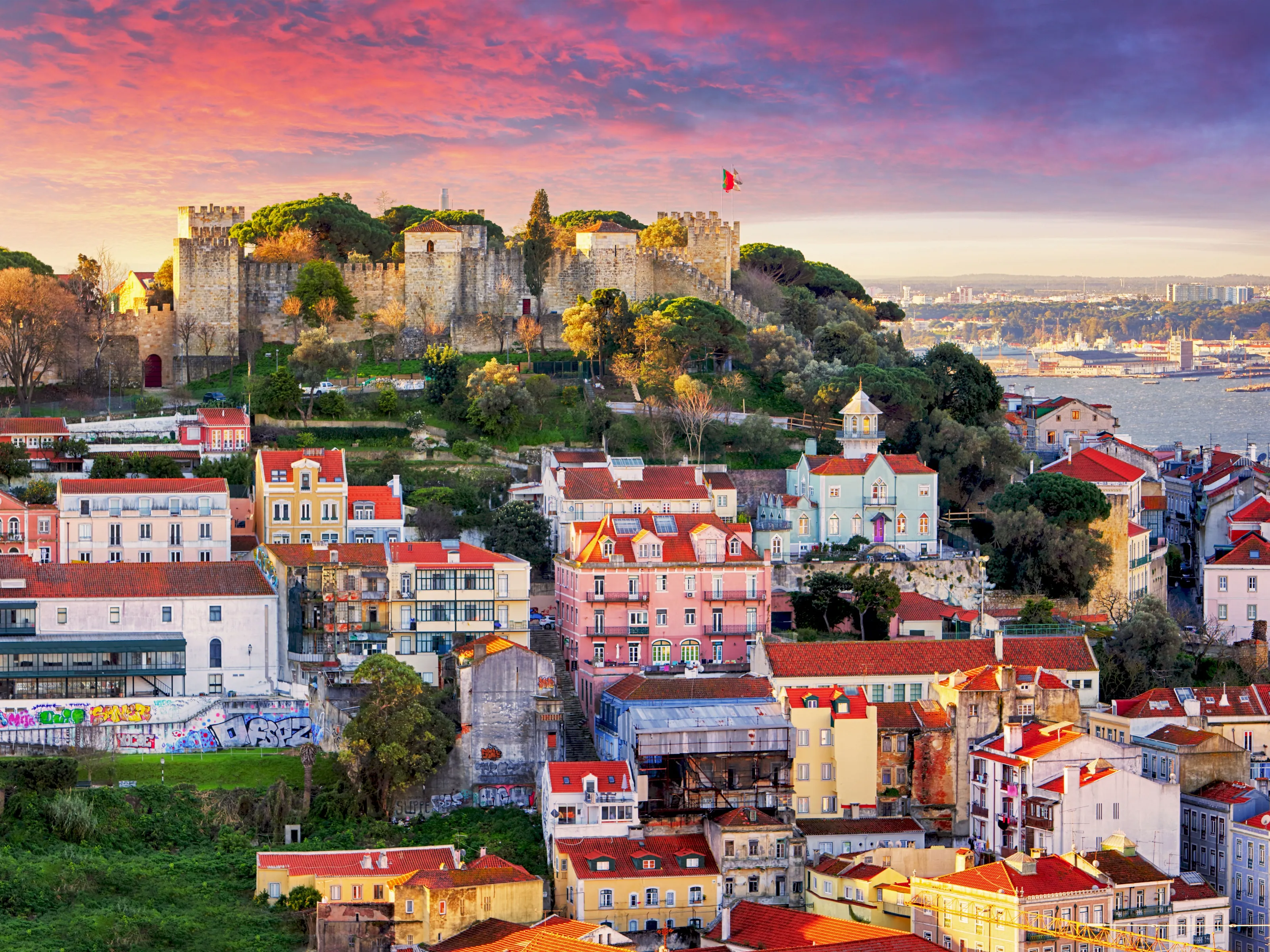Why Visit Córdoba?
Córdoba mesmerizes as Andalusia's Moorish jewel where the Mezquita's forest of 856 columns and striped arches create architectural poetry, flower-filled patios explode with geraniums each May, and Roman bridge spans Guadalquivir River connecting civilizations. This former caliphate capital (pop. 325,000) preserves Islamic golden age glory—10th-century Córdoba rivaled Baghdad as world's largest city with 400+ mosques, libraries housing 400,000 books, and multicultural tolerance unmatched in medieval Europe.
The Mezquita ($14) overwhelms as Christian cathedral inserted into Islamic mosque—red-and-white horseshoe arches hypnotize in endless colonnade, while Renaissance choir disrupts symmetry. Walk the 16-arch Roman Bridge (Puente Romano, free) to Torre de la Calahorra for Mezquita photo angles. Yet Córdoba's soul blooms in patios—Fiesta de los Patios (mid-May) opens private courtyards bursting with geraniums and jasmine, competing for best displays.
The Jewish Quarter (Judería) preserves narrow whitewashed lanes, synagogue ($0 one of three surviving in Spain), and Calleja de las Flores framing Mezquita tower through potted geraniums. Museums span Alcázar de los Reyes Cristianos' gardens ($5) where Columbus met Isabel and Ferdinand, to Medina Azahara ($2) ruins of vast 10th-century palace-city 8km west. Food scene celebrates Córdoba specialties: salmorejo (thick tomato soup), rabo de toro (oxtail stew), flamenquín ham rolls, and berenjenas fritas (fried eggplant).
Visit March-May or September-November for 15-28°C weather avoiding brutal summer (July-August reach 40°C+). With affordable prices ($65–$103/day), walkable historic center, world-class Islamic architecture, and genuine Andalusian hospitality minus Seville's crowds, Córdoba delivers Spanish cultural depth in compact, manageable scale perfect for 1-2 day visits.
What to Do
Moorish & Jewish Heritage
The Mezquita-Catedral
Spain's most fascinating monument ($14 entry)—8th-century mosque with 856 columns and hypnotic red-and-white striped arches, 16th-century Renaissance cathedral inserted into center. Arrive at 8:30am opening to see forest of columns without tour groups. Free entry Monday-Saturday 8:30-9:30am (worship time but you can walk quietly). Audio guide worth $5 Allow 90 minutes minimum.
Jewish Quarter (Judería) Labyrinth
Medieval maze of whitewashed lanes, flower-filled patios, artisan shops. Synagogue (tiny symbolic entry fee, one of only three medieval synagogues surviving in Spain after 1492 expulsion) small but historically significant. Calleja de las Flores (Flower Alley) frames iconic Mezquita tower photo through potted geraniums—arrive before 10am or after 6pm to avoid crowds queuing for same shot.
Medina Azahara Ruins
Vast 10th-century palace-city ruins 8km west (free for EU/EEA visitors, small fee ~$2 for non-EU, plus required shuttle bus ~$2–$3 from visitor center). Caliph Abd al-Rahman III's capital briefly rivaled Córdoba—imagine 400-room palace with gardens, mosques. Visit morning or late afternoon (last shuttle 6pm summer). Bring water, hat—little shade. Skip if pressed for time; Mezquita more impressive.
Flower Patios & Local Culture
Fiesta de los Patios (May Festival)
Mid-May (dates vary, usually 1st-2nd week), private courtyards explode with geraniums, jasmine, competing for best displays. $6–$9 entry to designated patio clusters (free to public ones). Pick up route map from tourist office. Evening (7-11pm) magical with lights, flamenco performances. Book accommodation months ahead—Córdoba packed.
San Basilio Neighborhood Patios
Even outside May festival, San Basilio/Alcázar Viejo preserves traditional patio-houses. Some open year-round ($5–$9). Locals spend evenings in patios—cool microclimate from water features and plants. Photography respectful—these are homes. Combine with nearby Alcázar de los Reyes Cristianos gardens ($5), where Columbus met Isabel and Ferdinand.
Córdoba Traditional Cuisine
Salmorejo (thick tomato soup, like gazpacho's rich cousin, $4–$6) originated here—order at Bodegas Mezquita. Rabo de toro (oxtail stew, $15–$19) reflects bullfighting heritage. Flamenquín (ham-filled, fried pork roll, $9–$13) local specialty. Berenjenas fritas (fried eggplant with honey, $5–$8). Lunch 2-4pm, dinner after 9pm.
Scenic Spots & Practical Tips
Roman Bridge & Torre de la Calahorra
16-arch bridge spanning Guadalquivir River (free to walk) offers classic Mezquita photos, especially dawn or dusk. Torre de la Calahorra museum ($5) at far end provides good historical context but skipable if tight schedule. Evening stroll across lit-up bridge romantic—locals gather on banks below for drinks.
Surviving Córdoba's Brutal Heat
July-August regularly hit 40-43°C (104-110°F)—Córdoba often Spain's hottest city. If visiting summer: explore Mezquita before 10am, siesta 2-6pm in air-con, resume evenings after 7pm when city cools and locals emerge. Bring water bottle, hat, sunscreen SPF 50+. Many shops/restaurants close midday. Spring/fall visit strongly recommended.
Day Trip from Seville
Fast AVE train from Seville (45 min, $27–$43) makes Córdoba perfect day trip, but city deserves overnight stay to see Mezquita at sunrise and patios at sunset. If day-tripping: arrive on early train (8am), Mezquita first, Jewish Quarter, lunch, afternoon at Alcázar gardens, evening train back. Leave luggage at Córdoba station lockers ($4–$6).
Gallery
Travel Information
Getting There
- Airports: SVQ
Best Time to Visit
March, April, May, October, November
Climate: Warm
Weather by Month
| Month | High | Low | Rainy days | Condition |
|---|---|---|---|---|
| January | 14°C | 6°C | 4 | Good |
| February | 20°C | 8°C | 0 | Good |
| March | 20°C | 10°C | 9 | Excellent (best) |
| April | 21°C | 12°C | 10 | Excellent (best) |
| May | 29°C | 16°C | 7 | Excellent (best) |
| June | 33°C | 18°C | 1 | Good |
| July | 39°C | 24°C | 0 | Good |
| August | 37°C | 22°C | 1 | Good |
| September | 31°C | 18°C | 3 | Good |
| October | 25°C | 12°C | 6 | Excellent (best) |
| November | 20°C | 11°C | 9 | Excellent (best) |
| December | 15°C | 6°C | 7 | Good |
Weather data: Open-Meteo Archive (2020-2024) • Open-Meteo.com (CC BY 4.0) • Historical avg. 2020–2024
Budget
Excludes flights
Visa Requirements
Schengen Area
💡 🌍 Traveler Tip (November 2025): November 2025 is perfect for visiting Córdoba!
Practical Information
Getting There
Córdoba station connects to Seville (45 min AVE, $27–$43), Madrid (1h$4538–$65), Málaga (1hr, $27+). No major airport—use Seville (1.5hr) or Madrid (2hr by train). Buses also connect regional cities. Station is 1.5km from Mezquita—walk or bus 3 ($2).
Getting Around
Córdoba historic center is compact and walkable (15 min to cross). Buses cover wider areas ($2 single, $5 day ticket). Buy tickets on board. Most attractions within walking distance from Mezquita. Taxis available but unnecessary for center. Skip rental cars—historic center pedestrian or restricted traffic.
Money & Payments
Euro (EUR). Cards widely accepted. ATMs plentiful. Some small tapas bars and patio entries cash-only. Tipping: not required but rounding up appreciated. Prices very moderate—Córdoba affordable for Spain.
Language
Spanish (Castilian) is official. English spoken in hotels and tourist restaurants, less in local areas. Andalusian accent distinctive—drops letters, fast-paced. Learning basic Spanish helpful. Younger generation speaks better English. Menus often have English translations at tourist sites.
Cultural Tips
Heat: Córdoba often Spain's hottest city—July-August unbearable (40°C+), siesta essential, visit early morning and evening. Flower patios: May festival sees private courtyards open ($6–$9 entry), competition for best displays. Islamic heritage: Mezquita shows religious coexistence and conflict—former mosque, now cathedral. Jewish Quarter: remember expulsion of Jews 1492. Meal times: lunch 2-4pm, dinner 9pm+. Siesta: shops close 2-5pm. Tapas culture: bar hopping normal. Flamenco: tablaos offer shows ($22–$32). Sunday: shops closed. Semana Santa: Easter processions. Orange trees: line streets, fruit bitter (for marmalade). Guadalquivir: river often low, Roman bridge photogenic. Medina Azahara: book tour or bus, UNESCO site.
Perfect 1-2 Day Córdoba Itinerary
Day 1: Mezquita & Jewish Quarter
Day 2: Patios & Medina Azahara
Where to Stay in Córdoba
Jewish Quarter (Judería)
Best for: Mezquita, narrow white lanes, restaurants, hotels, main attractions, touristy
San Basilio/Alcázar Viejo
Best for: Flower patios, quieter, residential, authentic, May festival, traditional
Centro (Gondomar)
Best for: Shopping, Plaza de las Tendillas, modern Córdoba, cafés, local life
Axerquía
Best for: Medieval, churches, less touristy, authentic neighborhoods, local markets
Frequently Asked Questions
Do I need a visa to visit Córdoba?
What is the best time to visit Córdoba?
How much does a trip to Córdoba cost per day?
Is Córdoba safe for tourists?
What are the must-see attractions in Córdoba?
Popular Activities
Top-rated tours and experiences in Córdoba
Ready to Visit Córdoba?
Book your flights, accommodation, and activities






